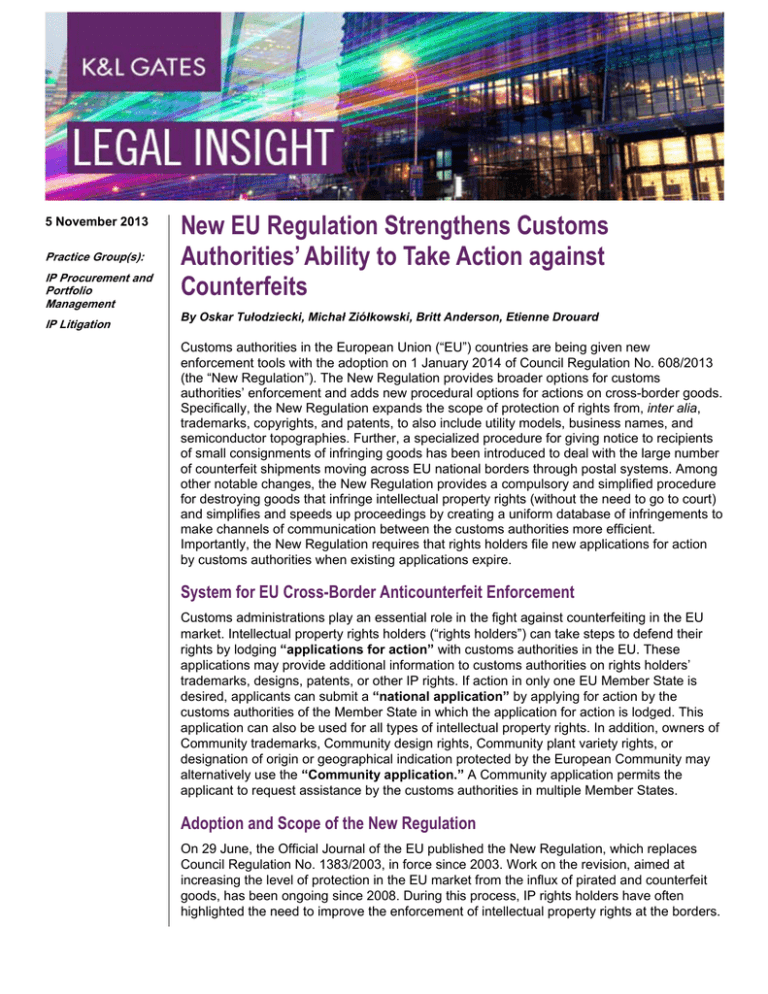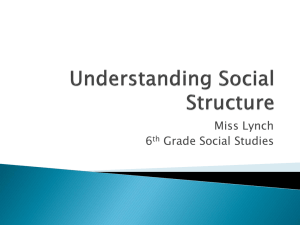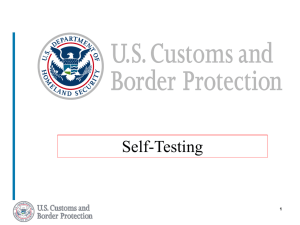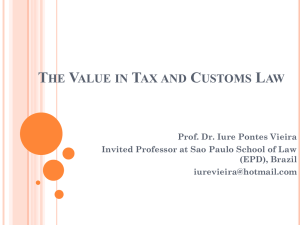
5 November 2013
Practice Group(s):
IP Procurement and
Portfolio
Management
IP Litigation
New EU Regulation Strengthens Customs
Authorities’ Ability to Take Action against
Counterfeits
By Oskar Tułodziecki, Michał Ziółkowski, Britt Anderson, Etienne Drouard
Customs authorities in the European Union (“EU”) countries are being given new
enforcement tools with the adoption on 1 January 2014 of Council Regulation No. 608/2013
(the “New Regulation”). The New Regulation provides broader options for customs
authorities’ enforcement and adds new procedural options for actions on cross-border goods.
Specifically, the New Regulation expands the scope of protection of rights from, inter alia,
trademarks, copyrights, and patents, to also include utility models, business names, and
semiconductor topographies. Further, a specialized procedure for giving notice to recipients
of small consignments of infringing goods has been introduced to deal with the large number
of counterfeit shipments moving across EU national borders through postal systems. Among
other notable changes, the New Regulation provides a compulsory and simplified procedure
for destroying goods that infringe intellectual property rights (without the need to go to court)
and simplifies and speeds up proceedings by creating a uniform database of infringements to
make channels of communication between the customs authorities more efficient.
Importantly, the New Regulation requires that rights holders file new applications for action
by customs authorities when existing applications expire.
System for EU Cross-Border Anticounterfeit Enforcement
Customs administrations play an essential role in the fight against counterfeiting in the EU
market. Intellectual property rights holders (“rights holders”) can take steps to defend their
rights by lodging “applications for action” with customs authorities in the EU. These
applications may provide additional information to customs authorities on rights holders’
trademarks, designs, patents, or other IP rights. If action in only one EU Member State is
desired, applicants can submit a “national application” by applying for action by the
customs authorities of the Member State in which the application for action is lodged. This
application can also be used for all types of intellectual property rights. In addition, owners of
Community trademarks, Community design rights, Community plant variety rights, or
designation of origin or geographical indication protected by the European Community may
alternatively use the “Community application.” A Community application permits the
applicant to request assistance by the customs authorities in multiple Member States.
Adoption and Scope of the New Regulation
On 29 June, the Official Journal of the EU published the New Regulation, which replaces
Council Regulation No. 1383/2003, in force since 2003. Work on the revision, aimed at
increasing the level of protection in the EU market from the influx of pirated and counterfeit
goods, has been ongoing since 2008. During this process, IP rights holders have often
highlighted the need to improve the enforcement of intellectual property rights at the borders.
New EU Regulation Strengthens Customs Authorities’ Ability to Take Action
against Counterfeits
The changes contained in Regulation No. 608/2013 are, therefore, primarily intended to
strengthen enforcement of the regulations and to expand the scope of the intellectual
property rights they cover.
As with the existing regulation, the New Regulation applies to imported goods declared for
release into free circulation, for export or reentry goods, shipments subject to a suspension
procedure, as well as goods that are placed in a bonded warehouse in the customs territory
of the EU. Importantly, the New Regulation expands customs authorities’ duty to enforce
intellectual property rights to include postal deliveries (see the “Small consignments”section
below).
What is not covered by the New Regulation
While sections on parallel trade and goods made by an authorized entity as original goods
but in excess of the previously agreed amount were discussed, and provisions were included
in early drafts of the New Regulation, the Council and the European Parliament decided not
to enter these provisions in the final version of the New Regulation. Moreover, goods carried
by passengers in their personal baggage continue to be excluded from the New Regulation,
provided that such goods are for their personal use—and subject to local interpretations of
such personal use. Goods that are only transiting EU territory are also not covered by the
New Regulation, unless there is a substantial likelihood that the goods will be rerouted for
sale in the EU market.
Broader scope of rights protected
One of the major changes under the New Regulation is the expansion of protection for
additional types of intellectual property. Under the current regulation, protection extends to
trademarks, industrial designs, copyrights, patents, supplementary protection certificates,
plant variety rights, and geographical indications. Protection under the New Regulation will
also extend to trade names (if protected under national law), semiconductor topographies,
and utility models, as well as devices that are primarily intended for circumvention of
technological measures, including components infringing any copyright or any related right.
Inclusion of these additional intellectual property types will give rights holders additional
bases to seek assistance from customs authorities.
Eligibility to file applications
Under the current law, only the intellectual property rights holder, its representative, or an
authorized user may submit an application for customs action. Under the New Regulation, a
broader set of entities is authorized to submit an application for action with customs
authorities, including intellectual property collective rights management bodies, professional
representatives’ bodies, groups of producers of products bearing geographical designations,
representatives of such groups and businesses entitled to use a geographical designation,
and control bodies or authorities for such a geographical designation. The New Regulation
also introduces a distinction between persons entitled to file an application with national
customs authorities and those entitled to file an application with EU customs authorities, with
a third category of persons authorized to submit both types of applications.
2
New EU Regulation Strengthens Customs Authorities’ Ability to Take Action
against Counterfeits
Small consignments–destruction of postal shipments
The New Regulation introduces a novel procedure for noticing of and destruction of goods in
small consignments. This change has been made in response to the growing number of
infringements of intellectual property rights carried out by post, especially in the field of
pharmaceuticals. Under the procedure, customs authorities inform the importer or recipient
of the postal shipment of customs’ intent to destroy the shipment, and the party has 10 days
to present its position, including its consent to the destruction. If the importer or recipient of
the postal goods has not raised an objection within 10 days, the customs authorities may
carry out the destruction by deeming such consent as implied. If an objection is raised by the
importer or recipient of the goods, after completing the formalities, the customs authorities
release the goods if they have not received information from the IP rights holder on the
initiation of proceedings to determine whether an intellectual property right has been
infringed.
Use of simplified destruction procedure made mandatory for Member States
Current law provides a simplified procedure for destruction of counterfeit or pirated products.
However, use of this procedure has been optional and up to the discretion of the individual
EU Member States. The New Regulation makes this procedure compulsory. Under this
procedure, customs authorities will now be able to destroy goods detained at the border for
infringement without the need for a judicial decision confirming the violation, if both the IP
rights holder and the importer (in this case tacit consent may apply) provide their written
consent to the destruction within 10 days.
Consent to the destruction of the goods is an admission that the goods infringe intellectual
property rights, and under this procedure, parties may be able to avoid additional court costs
and liability. If the importer does not consent to the destruction of the goods, the IP rights
holder may initiate proceedings to determine whether a violation of intellectual property rights
has occurred. The importer or recipient’s tacit consent—i.e. the absence of any explicit
objection—within this 10-day period may, however, raise further procedural issues regarding
the burden of proof, insofar as destructions may be performed by customs authorities without
any judicial decision.
Information exchange between national authorities
To simplify and significantly expedite procedures, the New Regulation introduces methods
for information exchange between national customs authorities and also identifies the
specific types of data and information to be exchanged. A central electronic database will be
used to exchange information on decisions on rights holders’ applications for action as well
as national customs authorities’ actions on infringing goods. The New Regulation mandates
that national customs authorities share information with the central database whenever they
issue decisions granting applications for action, extend the period of protection for an
application for action, or suspend a decision granting the application. These provisions for
information exchange will enable customs authorities both to cooperate and act consistently
with one another on anticounterfeiting efforts.
3
New EU Regulation Strengthens Customs Authorities’ Ability to Take Action
against Counterfeits
The costs of actions taken
The New Regulation provides that an IP rights holder reimburse the customs authorities for
the costs incurred in carrying out enforcement activities. The rights holder can then apply for
compensation from the infringer or importer and, where applicable, from its agents. These
provisions on reimbursement of customs authorities by the IP rights holders as well as the
ability to seek compensation from the infringer also apply to enforcement costs incurred in
use of the simplified destruction procedure.
Current applications for action required to be refiled
Under the New Regulation all currently binding applications for action by the customs
authorities granted in accordance with Regulation No. 1383/2003 will remain valid for the
period specified in the applicable decisions of the customs authorities. The original
application for action, however, may not be further extended; instead, a new application must
be submitted under the New Regulation.
Implementation
The current Regulation No. 1383/2003 will expire on 1 January 2014, after which the New
Regulation No. 608/2013 will come into force. The European Commission implementing
regulation for the New Regulation is still pending, but is expected to issue in the coming
months.
Authors:
Oskar Tułodziecki
Britt L. Anderson
oskar.tulodziecki@klgates.com
+48.22.653.4211
britt.anderson@klgates.com
+1.650.798.6746
Michał Ziółkowski
Etienne Drouard
michal.ziolkowski@klgates.com
+48.22.653.4291
etienne.drouard@klgates.com
+33.15.844.1512
Anchorage Austin Beijing Berlin Boston Brisbane Brussels Charleston Charlotte Chicago Dallas Doha Dubai Fort Worth Frankfurt
Harrisburg Hong Kong Houston London Los Angeles Melbourne Miami Milan Moscow Newark New York Orange County Palo Alto Paris
Perth Pittsburgh Portland Raleigh Research Triangle Park San Diego San Francisco São Paulo Seattle Seoul Shanghai Singapore Spokane
Sydney Taipei Tokyo Warsaw Washington, D.C. Wilmington
K&L Gates practices out of 48 fully integrated offices located in the United States, Asia, Australia, Europe, the Middle East and South
America and represents leading global corporations, growth and middle-market companies, capital markets participants and
entrepreneurs in every major industry group as well as public sector entities, educational institutions, philanthropic organizations and
individuals. For more information about K&L Gates or its locations, practices and registrations, visit www.klgates.com.
This publication is for informational purposes and does not contain or convey legal advice. The information herein should not be used or relied upon in
regard to any particular facts or circumstances without first consulting a lawyer.
©2013 K&L Gates LLP. All Rights Reserved.
4





